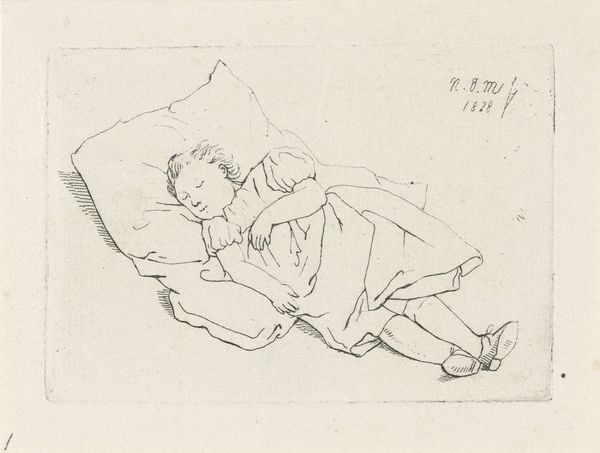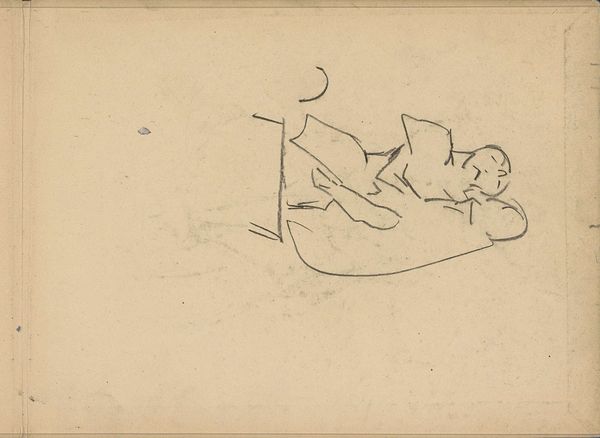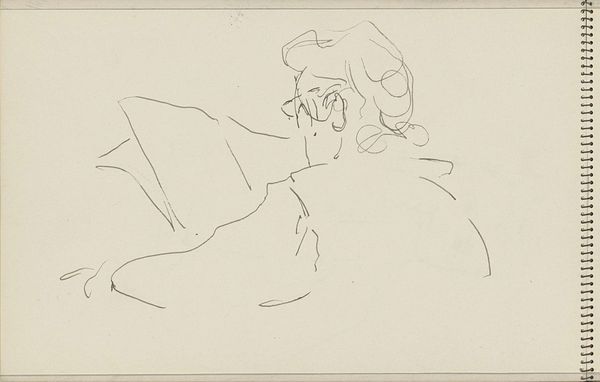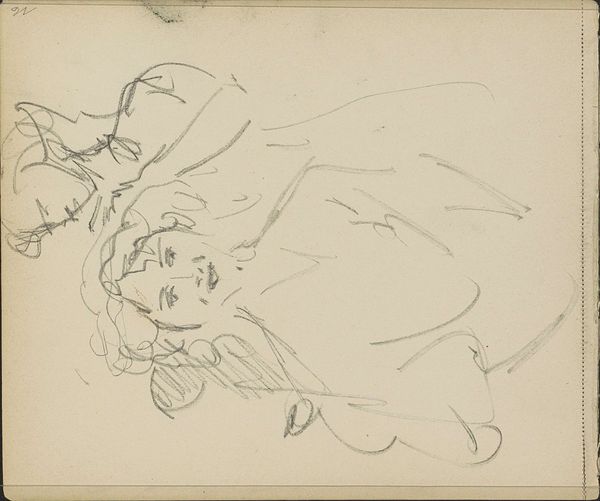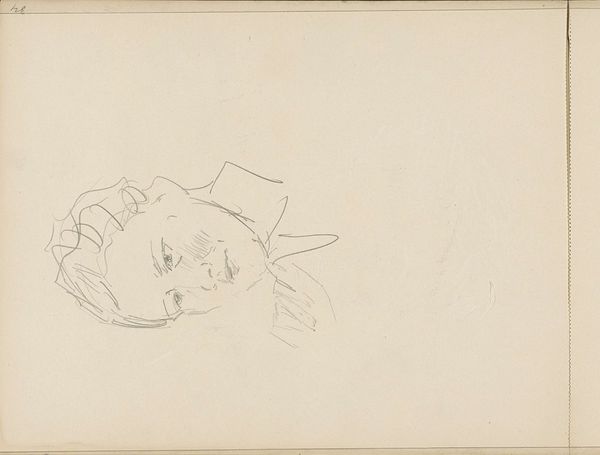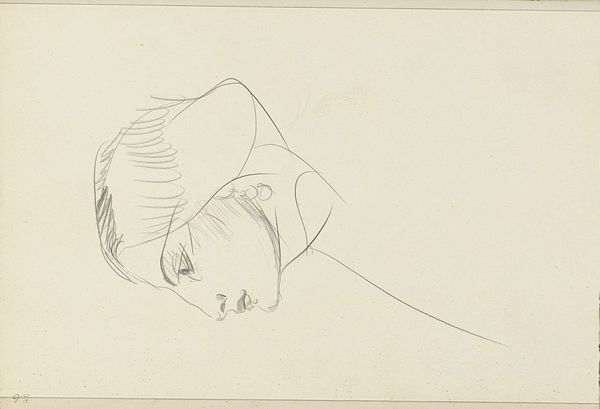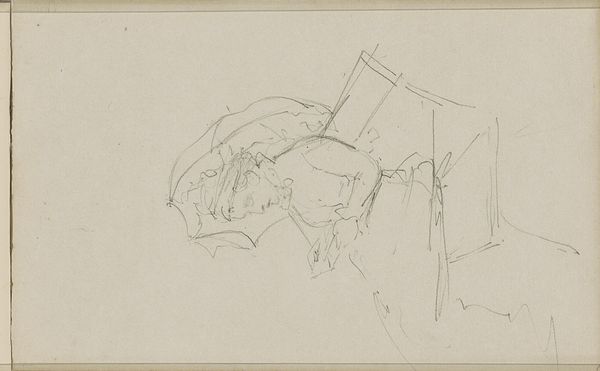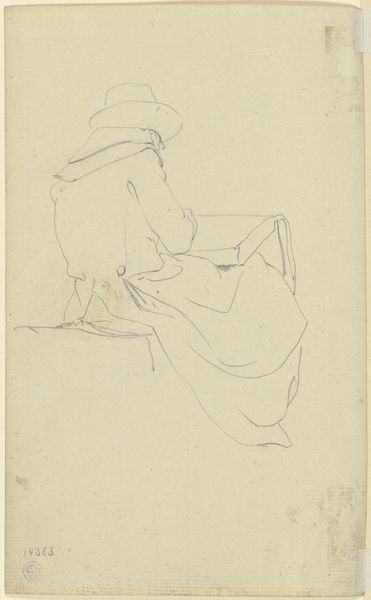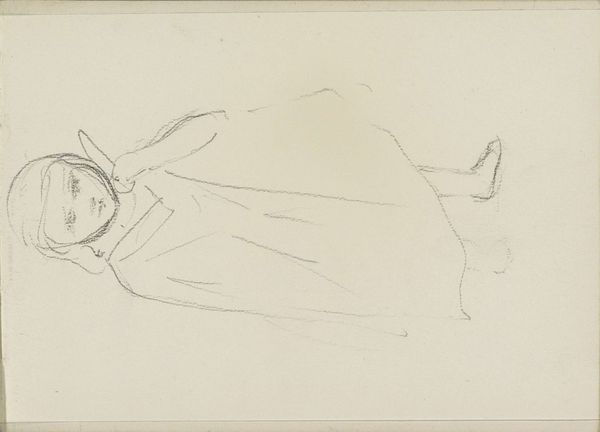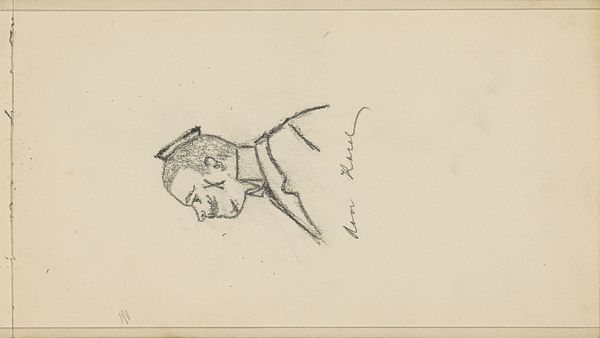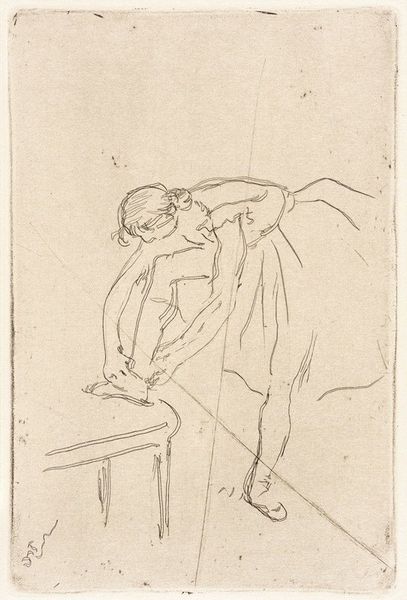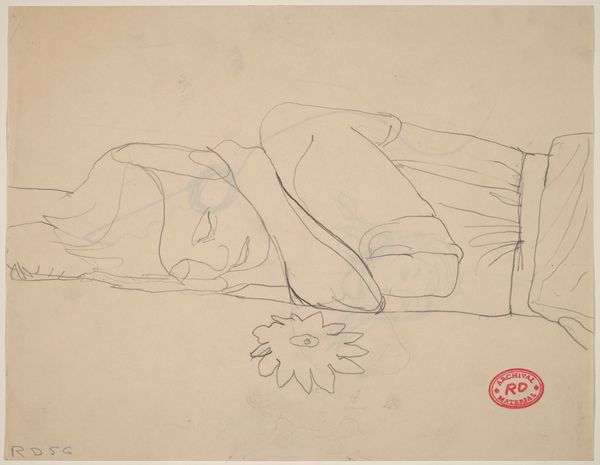
drawing, pencil
#
portrait
#
17_20th-century
#
drawing
#
figuration
#
pencil
#
modernism
Dimensions: height 199 mm, width 135 mm
Copyright: Rijks Museum: Open Domain
Curator: What strikes you first about this intriguing drawing? Editor: Well, the first thing that jumps out is the gaunt figure in bed, starkly rendered with almost feverish intensity. It’s a rather haunting depiction. What can you tell me about it? Curator: This is "Karikatuur van Leo Gestel op zijn ziekbed" a pencil drawing whose dates are recorded as being between 1891 and 1941. The work now resides here at the Rijksmuseum. Editor: A caricature on a sickbed—there’s a lot to unpack there. I can't help but wonder about the relationship between the artist and Gestel. Was this meant to be humorous, or is there a more somber commentary at play regarding illness and vulnerability? Given the timeframe, it would be interesting to place the art piece in the historical context to appreciate underlying nuances, especially regarding prevalent diseases during that period and attitudes toward public health. Curator: I agree that it walks a line between the grotesque and the poignant. The exaggerated features—the wide eyes, the almost skeletal hands—speak to the visual language of caricature, but there's an undeniable sense of pathos here. It brings to mind traditions of depicting the "Dance of Death," the "Ars moriendi" in how it forces us to confront mortality. What I find particularly compelling is how it uses the image to provoke thought and deeper awareness. The drawing's emotional potency suggests more than mere satire; instead it serves as a means of processing uncomfortable realities, connecting with audiences through visual storytelling steeped in our shared cultural experiences and confronting the darker, unacknowledged aspects of society and personal suffering. Editor: That’s interesting—and valid. It would seem vital to understand the cultural interpretation of this work. It's about more than personal aesthetics; the pencil drawing serves as a historical document, sparking reflections on human suffering across time. The choice to make it a pencil drawing is striking—did the medium have symbolic meaning to the artist, a certain lack of 'seriousness?' Or did it allow for spontaneity, facilitating an unfiltered emotional output? Curator: Perhaps it allowed for both intimacy and immediacy. Editor: It's a small window into a past experience and the social conditions from which it came, definitely prompting essential questions regarding artistic expression as an advocacy for those whose pain is regularly ignored. Curator: Absolutely. It urges us to confront universal issues and reflect on the value of each individual's existence in the face of life’s ephemeral nature. Editor: Indeed, making art a powerful catalyst for promoting justice and equality by making tangible the hidden realities many prefer not to see.
Comments
No comments
Be the first to comment and join the conversation on the ultimate creative platform.
